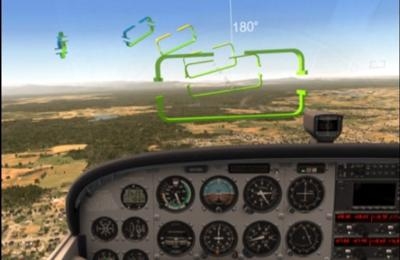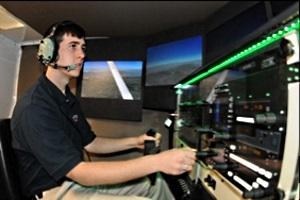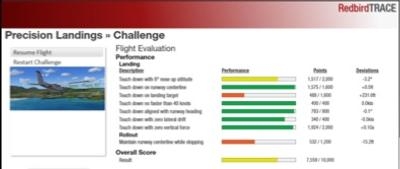You're Either Part Of The Solution Or Part Of The Particulate
By Jerry Gregoire
Hang around long enough and it occurs to you that the notion of progress and innovation as a continuum is nonsense. Time doesn’t flow, it ticks, and between these punctuations of insight and process changing invention there are periods of inertia so long that they morph from convention to paradigm to ritual. Over time the ritual becomes golem, a lumbering, poorly defined servant too ugly to love and too big and imposing to ignore. Further, it is a pervasive and persistent misunderstanding among evangelists of any idea that insight will work with people who are unmotivated to listen. Getting the message across doesn’t depend on articulation or eloquence or the impeccable logic of your argument, but on the emotional context in which the message is being heard. It is absolutely true that others can hear you only when they are moving toward you and they are not likely to hear you when your words have to chase them. Scaling the regulatory wall is as big a challenge for designers as creating the
solutions. The rule making process in every part of the world is far too slow to keep up with the technology and the only solution may be for us to develop strategies to keep the rule makers out of the way.

Our current simulator designs are inadequate for many reasons, not least if which is our industry's insistence on delivering training, not at the convenience or the optimal pace of the student, but based on the availability of the instructor. Instructors are a well understood point of failure in all flight training interactions for reasons ranging from personal chemistry between the instructor and student to general level of competency. Large training organizations, like Universities, attempt to mitigate the problem through standardization and the careful vetting and training of instructors and this helps, but this is not the typical environment for most students.
Making it possible for students to train to proficiency, at their own pace, in an immersive, experiential, environment, while receiving the kind of entirely objective and non-judgmental feedback that only a machine can give, is the second dimension of value in flight training devices. As Generation 2 depends on the existence of a widely available infrastructure of high fidelity simulators, each Generation builds on the capability of the Generation before it.
Designers of Generation 2 simulators began by looking at those tasks that might be more effectively taught in a simulator within the environment of a simulated flight, with or without an instructor present, with the goal of significantly reducing the time to proficiency in the aircraft. Opportunities were identified and work begun in three key and pretty obvious areas, those being: communications with ATC, flight maneuvers, and cockpit automation. There are many examples of projects. I will describe just a couple of the more interesting examples.
In the case of ATC Communications, a fully autonomous artificial air traffic control presence has been added to the active simulation. One such project, known as Parrot, is software running within the main simulation engine with connections to the student pilot via the student’s aviation headset. Parrot is listening to what the student is saying anytime the push to talk button is pressed and it responds by speaking with a synthesized voice appropriate to the service being simulated. Armed with a database containing every frequency for every ATC function everywhere in the world, moment by moment knowledge of the precise location and altitude of the simulated aircraft, knowledge of the frequency the active radio is tuned to, and a virtuoso’s grasp of FAR/AIM radio communications phraseology, Parrot can, with the use of a library of voices, pretend to be whatever ATC service it needs to be.
When a radio call is made, Parrot will verify that the radio is on an active frequency given the position and altitude of the airplane, assess the student’s accurate use of phraseology and whether or not the request is appropriate for the frequency, and then responds accordingly. If any of those conditions are untrue, Parrot will respond with “Say Again” or it won’t respond at all if the radio is currently tuned to inactive frequency. It is a unique feature of Parrot is that it never gets tired or impatient saying “Say Again”.

If the student fails to get Parrot to respond as expected, pressing the push-to-talk button and saying “Help me”, causes Parrot to change from ATC mode to instructor mode to explain to the student the problem. For instance, Parrot may say, “You are asking for permission to taxi, but you are on an unused frequency”, or “I am waiting for you to request permission to taxi, say it this way, ‘November one one five lima delta, ready to taxi from the ramp with zulu’”.
Parrot and projects like it would not work without a very high recognition rate, even with students with significant accents, like Texans. There are no voice recognition engines on the market which can provide a high enough level of accuracy, as delivered. To achieve the performance necessary, a “context engine” was developed to interpret the message provided by the voice recognition software to help make sense of what is said. The resulting level of recognition is excellent, even with accents, but only to a point. Meaning that, if a person cannot make sense of what is being said because of speaker’s accent, Parrot can’t understand it either, in which case it will say’ “Say again”. The application here for providing practice and improvement in aviation English for non-native speakers is excellent.
The second interesting bit of technology allows for training in the use of IOS based aviation apps such as Foreflight and Jeppesen Flight Deck. In case you’re not familiar, these apps contain current charts in electronic form along with approach plates, weather, airport data, and flight plan filing tools eliminating the need for paper charts in the cockpit.

Cockpit apps for the iPad and other devices have eliminated mountains of paper from the cockpit. Problem is, training in the use of these apps for situational awareness has been impossible because the aircraft depicted in the app thinks it is wherever the simulator is sitting. Greater situational awareness is delivered by the GPS data in the location services layer of the IOS which can show the aircraft's position on the charts and the approach plates. Here’s the rub. When attempting to use these apps in a simulator, the IOS places the aircraft wherever the simulator is sitting, not where the aircraft in the simulation is flying. Cygnus technology, developed in conjunction with Bad Elf and Apple, is a unique bit of hardware and software that when installed in a simulator queries the simulation for location data then wirelessly spoofs the location services layer on all IOS devices within range, thereby solving the problem.
These and the wide range of other Generation 2 extensions all have a couple of things in common. One is that they are exponentially more effective than a standalone training module because they are operated in the context of a simulated flight. Second, none of them are covered or credited in any class of simulator by any authority in the world.
If You Gaze At The Simulator, The Simulator Will Gaze Back At You: Nietzsche (sort of)
The defining characteristic of Generation 3 simulators is the device’s use of scenarios and role playing with the ability to assess and react to the students training needs, performance, and decision making. Interactivity is a crucial component as the devices deliver custom fight conditions and the level of coaching appropriate to the students level of proficiency.
This capability was demonstrated in a very public forum during the Flying Magazine Challenge Cup, an international flying skills competition that took place during the Spring and Summer of 2014. Thousands of pilots, student pilots and, most significantly, non-pilots took part in the competition which culminated in a championship event at EAA Airventure Oshkosh in July. The competition was a measure of the contestant’s ability to precisely execute steep turns, lazy eights, and precision landings each of which were taught, measured and scored by the simulator without the presence of a human instructor.
During a flight session on any one of the three events, the participant could select, as often and in whatever order, a training session, a practice session, or a scored competition session. What made this event remarkable was that non-pilots who received 100% of their training without the presence of a human instructor, were able to perform these challenging maneuvers to FAA standard within 20 minutes of stepping into the simulator.

The challenges were built using a commercial product called TRACE and each has three parts: a training video containing an overview of the skills involved, a coached training flight where the participant flies the skills challenge with the help of interactive guidance from the simulator, and a scored competition flight where the same skills are evaluated.
Development is currently underway to extend this type of experiential training to subject matter beyond stick and rudder skills to include instrument flight, cockpit procedures, aeronautical decision making and topics usually considered content for ‘ground school’.
What's That You're Doing There?
If we think of the modern avionics suites as a single smart device, it is true that the avionics knows more, at any one moment, about what is occurring in the flight than the pilot does. For instance, the pilot may know, at any particular moment, the aircraft’s airspeed but not the oil pressure or know the deviation from the localizer but not the position of nearby traffic. The magic that a computer brings to bear in this situation is its ability to scan and assess all of the data available thousands of times per second. For the pilot in command, is the equivalent of having dozens of co-pilots in the right seat.
Imagine for a moment you are piloting an actual flight from Austin, Texas to Mobile, Alabama late one afternoon in July. Scattered thunderstorms are a defining characteristic of summer afternoons along the Gulf coast and course diversions and rough rides are always expected. Pilots have to be especially careful that the published arrival procedure or approach does not take them through a fast building cell. Now, imagine that you are 60 miles West of Mobile getting ready to begin your descent when you’re portable co-pilot speaks up through your headset and says,
“Captain, we are currently 60 miles west of our destination, the ATIS reports the ILS 33 approach in use and visibility and ceilings are below minimums with one quarter mile visibility and 100 feet overcast and winding gusting to 30 knots. Weather conditions at our alternate airport are VFR. A single approach at Mobile downtown followed by a missed approach and flight to our alternate will leave us with a one hour’s worth of fuel. Would you like for me to bring up the ILS 33 approach plate.”
All of the information that the portable co-pilot needs in order to offer this advice is currently available in the avionics sets being delivered for training aircraft today.

A portable co-pilot, (let’s call her Sal for simplicity’s sake), operating the simulator to provide training and assess performance, which can then move seamlessly to the cockpit to monitor flight conditions and pilot performance is the basis of Generation 4. In this environment, SAL is the simulation engine and what is typically thought of as the simulator (that big plastic box atop the motion platform) becomes an appliance that SAL directs.
If developed properly, SAL becomes the very definition of tailored flight training for the individual pilot.
A License To Learn
One might look at these developments and imagine a world with no need for human flight instructors. Nothing could be further from the truth. Regardless of how much primary training gets moved to these new generations of simulators, sooner or later the student will have to transition to the aircraft, at which time, the ‘flight instructor’ slash ‘check pilot’ will become the most important safety device in the cockpit.
By the same token, it doesn’t mean that life will be the same, for anyone. In an environment of highly structured and regularized training, where the student sets the pace and the airplane becomes the secondary flight training platform, one that is transitioned to, flight instructors will have to adapt accordingly. The business model on which the majority of private flight schools operate will also need to change. Flight instructors that look to build flight time as fast as possible as a means to an airline job, at the student’s expense, and flight schools counting on aircraft rentals as their primary source of their income will eventually have to give way to more rational and efficient operators.
The consumer of the flight training services will always gravitate to the provider that delivers the greatest value.
(Images provided by the Author)
(Jerry Gregoire is the founder and owner of Redbird Flight Simulations)
 ANN's Daily Aero-Term (04.24.24): Runway Lead-in Light System
ANN's Daily Aero-Term (04.24.24): Runway Lead-in Light System ANN's Daily Aero-Linx (04.24.24)
ANN's Daily Aero-Linx (04.24.24) Aero-FAQ: Dave Juwel's Aviation Marketing Stories -- ITBOA BNITBOB
Aero-FAQ: Dave Juwel's Aviation Marketing Stories -- ITBOA BNITBOB Classic Aero-TV: Best Seat in The House -- 'Inside' The AeroShell Aerobatic Team
Classic Aero-TV: Best Seat in The House -- 'Inside' The AeroShell Aerobatic Team Airborne Affordable Flyers 04.18.24: CarbonCub UL, Fisher, Affordable Flyer Expo
Airborne Affordable Flyers 04.18.24: CarbonCub UL, Fisher, Affordable Flyer Expo







